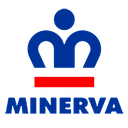Executive Secretary

XI Conferencia Científica Internacional de Ingeniería Mecánica
COMEC 2023
VI Simposio de Diseño e Ingeniería asistida por computadora, Biomecánica y Mecatrónica
Resumen
El Transportador de Empuje Tubular (TPC) es un innovador sistema de transporte para el traslado de materiales a granel no minerales. Establece nuevos estándares, especialmente en tecnología agrícola y de alimentos, en términos de rutas de transporte flexibles y diseño simple. Sin embargo, el principio de transporte también es aplicable en la industria química y de procesos si se transportan materiales poco abrasivos. A diferencia de otros sistemas de transporte, el material a granel se transporta en un tubo cerrado sin un dispositivo de tracción (cuerda o cadena), sino con la ayuda de elementos de empuje.
El documento presentará el diseño general y la función de dichos transportadores, las ventajas y desventajas, así como las áreas de aplicación. Se explicarán los enfoques de cálculo para las resistencias al movimiento y el consumo de energía con diferentes rutas de TPC. Los cálculos se compararán con mediciones experimentales en un banco de pruebas de tamaño industrial. Se puede mostrar una buena correspondencia entre las mediciones y los cálculos para material a granel de grano fino. Para materiales más gruesos, se debe considerar la sujeción y trituración de partículas en el espacio entre el tubo y los elementos de empuje. Para apoyar el proceso de diseño y cálculo de los TPC, el documento dará una perspectiva de cómo se pueden simular estos transportadores en base al Método de Elementos Discretos (DEM).
Abstract
The Tubular Push Conveyor (TPC) is an innovative conveying system for the transport of non-mineral bulk materials. It sets new standards, especially in agricultural and food technology, in terms of flexible conveying routes and simple design. However, the conveying principle is also applicable in chemical and process industry if low-abrasive materials are conveyed. Unlike other conveying systems, the bulk material is transported in a closed tube without a traction device (rope or chain) but by the help of push elements.
The paper will present the general design and function of such conveyors, the advantages and disadvantages as well as the applications areas. The calculation approaches for the motion resistances and power consumption with different TPC routings will be explained. The calculations will be compared with experimental measurements on an industrial sized test rig. A good correspondence between measurements and calculations can be shown for fine grained bulk material. For coarser materials the clamping and crushing of particles in the gap between tube and push elements must be considered. To support the design and calculation process of TPCs the paper will give an outlook, how such conveyors can be simulated based on the Discrete Element Method (DEM).
Sobre el ponente

Prof. Andre Katterfeld

Discussion



